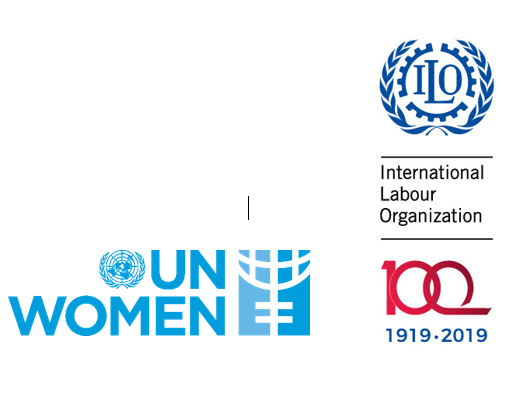To be effective, any approach aimed at ending violence and harassment against women in the world of work needs to aim at ending discrimination. To this end, it needs to recognize that many women experience discrimination based on multiple grounds. As UN Women observes, “[t]hose women and girls who are furthest behind often experience multiple inequalities and intersecting forms of discrimination, including based on their sex, age, class, ability, race, ethnicity, sexual orientation, gender identity and migration status” (UN Women, 2017a, p.6).
Intersectionality describes how the various grounds of discrimination interact, creating a system of oppression that is shaped by “…social and cultural norms as well as the dynamics of each social, economic and political system” (United Nations, 2006, p.41). A women’s racial or ethnic origin, caste, class, migration or refugee status, age, religion, sexual orientation, marital status, disability or HIV status will influence the types of violence and harassment they experience, and the ways in which they experience it (United Nations, 2006, p.46).
Intersectional discrimination exposes some groups of women to a greater risk of violence (European Institute for Gender Equality, 2017). Migrant women, for example, may be placed in situations of vulnerability to discrimination and violence due to their migration status and economic position, and because of risk factors present in the sector, occupation or place in which they work (AFL-CIO, Solidary Centre and Futures Without Violence, 2017). Workplaces where the predominant workforce is of one gender or one ethnicity may also be more hostile to workers of a different gender or coming from under-represented ethnic groups.
- A national survey in Australia found that women workers, workers with disabilities, LGBTI+ workers and younger workers experienced the highest levels of sexual harassment. The survey data on workplace sexual harassment in the last five years suggests that: almost two in five women (39 per cent) and just over one in four men (26 per cent) experienced workplace sexual harassment; people aged 18 to 29 were more likely than those in other age groups to have experienced workplace sexual harassment in the past five years (45 per cent); people who identify as “gay, lesbian, bisexual, pansexual, queer, asexual, aromantic, undecided, not sure, questioning or other” were more likely than people who identify as straight or heterosexual to have experienced workplace sexual harassment (52 per cent and 31 per cent respectively); Aboriginal and Torres Strait Islander people were more likely to have experienced workplace sexual harassment than people who are not Aboriginal or Torres Strait Islander (53 per cent and 32 per cent respectively); people with disability were also more likely than those without disability to have been sexually harassed in the workplace (44 per cent and 32 per cent respectively) (Australian Human Rights Commission, 2018, pp. 7-9).
- Inuit women in Canada working in mines in remote and isolated locations reportedly experience high levels of workplace violence based on sex or race (Pauktuutit, Canada's Inuit Women's Association, 2014).
- Low-paid migrant farm workers and janitors in the United States often work in conditions of vulnerability and frequently risk being subject to sexual harassment and sexual assault by their supervisors. Many do not report violence and harassment, because they fear they will lose their jobs or they will be deported (Yeung, 2018).
- Younger workers are more likely to work in casual and non-standard forms of employment, and those in which there is a greater risk of violence. Young women workers participating in the International Trade Union Confederation (ITUC) “Decisions for Life” project identified violence and harassment as one of the core issues affecting their daily lives (ITUC, 2011).
|
Intersectionality in the workplace and violence prevention |
|
Protocol against sexual and gender-based harassment and against harassment based on sexual orientation, gender identity and/or gender expression, Confederación Sindical de Comisiones Obreras (CCOO) 2016 (CCOO, 2016) The Protocol presents actions against workplace abuses that affect women and LGBTI people and covers sexual harassment based on sexual orientation and/or identity and gender expression. A range of bargaining measures are proposed, including procedures and protocols addressing LGBTIphobia, raising awareness and providing support to LGBTI workers. The Protocol contains model clauses that can be used in a collective bargaining agreement. |
